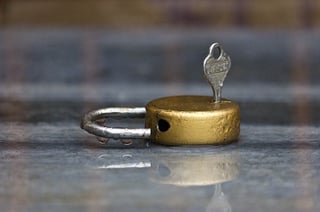 For the last three weeks, I’ve tried to answer some very commonly-asked questions: what’s the difference between chapter 7 and chapter 13 bankruptcy? The answer to that question is fairly easy - chapter 7 is a liquidation approach to money problems, while chapter 13 is a repayment program. And the mechanics of the two chapters - the preparation of a petition, schedules and statements, the filing of the petition and schedules, and the steps to obtain a discharge - are also fairly easy to explain. But since it’s taken me four weeks-worth of blogs to cover this topic, it’s the follow-up question “what’s the best chapter for us?” is more complex. This week, I’ll write some more about the differences between the two chapters.
For the last three weeks, I’ve tried to answer some very commonly-asked questions: what’s the difference between chapter 7 and chapter 13 bankruptcy? The answer to that question is fairly easy - chapter 7 is a liquidation approach to money problems, while chapter 13 is a repayment program. And the mechanics of the two chapters - the preparation of a petition, schedules and statements, the filing of the petition and schedules, and the steps to obtain a discharge - are also fairly easy to explain. But since it’s taken me four weeks-worth of blogs to cover this topic, it’s the follow-up question “what’s the best chapter for us?” is more complex. This week, I’ll write some more about the differences between the two chapters.
Secured debt: your home mortgage
One of the major distinctions between chapter 7 and chapter 13 is the way the two chapters deal with secured debt - such as car loans and home mortgages. In both cases, when a case is filed, the Bankruptcy Court issues an injunction - called the automatic stay - that prevents any creditor from taking any action to collect on a debt owed by the bankruptcy creditor. The automatic stay applies to all creditors - from the credit card company, to the Internal Revenue Service, to the bank that holds a mortgage on real estate. All collection must stop. But what happens with secured debt following a bankruptcy discharge in chapter 7 and what happens with secured debt in chapter 13 can be very different.
Let’s look at real estate mortgages first. In chapter 7 cases, the filing of a bankruptcy case at least postpones any type of foreclosure proceeding. And when the chapter 7 debtor receives his discharge, the debtor’s personal obligation to pay his mortgage payment is discharged - that means that the mortgage company can’t contact the debtor to remind him to pay the mortgage payment. But a chapter 7 discharge does not discharge the security interest the mortgage company has in the real estate. In other words, while collection on a mortgage is forbidden in a chapter 7 case while the case is pending, once the chapter 7 discharge is entered, the mortgage is “still there” and the chapter 7 debtor will have to remain current on the mortgage or face a mortgage foreclosure. If the chapter 7 debtor is behind on mortgage payments at the time the case is filed, the mortgage company has the ability to bring a motion in Bankruptcy Court to lift the protection that was put in place at the time of filing and proceed to foreclosure, even while the chapter 7 case is pending. So the chapter 7 debtor behind on house payments must be aware that the filing of a chapter 7 case will only offer a temporary solution to a mortgage default, and if the chapter 7 debtor can’t catch up on payments during the time the bankruptcy case is pending, foreclosure is a real possibility. For debtors who are current on their house payments at the time a chapter 7 case is filed, continuing to be timely on first and second mortgages is necessary to prevent a future foreclosure. Because mortgage companies retain their security interests in real estate in a bankruptcy, the need to continue to pay the mortgage is present in every chapter 7 case in which the debtor is a home owner.
SECURED DEBT: YOUR HOME MORTGAGE with Chapter 13
Chapter 13 is different. One of the main reasons clients choose to file chapter 13 bankruptcies is that their home mortgage is in default and the clients want to eliminate the possibility of foreclosure and keep their home. “Am I going to lose my home?” is a concern so many of my clients have, and, thanks to chapter 13, the answer is no.
Chapter 13 is a repayment plan. If a client is in default on their mortgage loan at the time the bankruptcy case is filed, the chapter 13 plan can provide for a repayment (it’s called a “cure”) of the back house payments. The chapter 13 debtor must continue to make the ongoing mortgage payments after the chapter 13 case is filed. A portion of the monthly chapter 13 payment the debtor makes will then be dedicated to catching up on the past-due amount that existed at the time of filing. Allowing people to remain in their home, even in the face of a foreclosure, is a key feature of chapter 13.
And in some cases, chapter 13 gives debtors a chance to remove second mortgages or home equity lines of credit from their home. Chapter 13 is the only chapter that provides this; in order to “strip” a junior lien, the chapter 13 debtor must prove that the junior lien is completely unsecured - that is, that the value of the home is less than the balance of the existing first mortgage. During the dark years of the great recession, lien-stripping was more common. As property has started to appreciate, I see fewer cases in which a mortgage is completely unsecured. But this situation still exists, and chapter 13 is the only bankruptcy chapter that allows a debtor to remove a second mortgage as a secured debt.
Secured debt: your car loan
The other “typical” secured debt my clients have is vehicle loans. Just as is the case with a home mortgage, chapter 7 and chapter 13 deal with car loans differently. Car loans in chapter 7 are treated just like home mortgages: The filing of the case protects the chapter 7 debtor from repossession. The bankruptcy discharge removes the chapter 7 debtor’s obligation to pay the car loan, but not the lender’s security interest in the car. So if a chapter 7 debtor does not stay current on a car loan after filing, the lender has the ability to repossess the vehicle after the debtor has received her discharge.
Chapter 13 is different. Chapter 13 allows debtors to re-write their car loans. The chapter 13 debtor can include a vehicle loan in her repayment plan, with the feature that interest rates can be adjusted (currently the interest rate on car loans paid in a chapter 13 case is 5.25% to 6.00% ).
And in cases where the car loan was taken out more than 910 days (2.5 years) prior to filing the chapter 13 case, the debtor has the ability to lower the loan balance to the value of the vehicle. So chapter 13 is a very effective way to lower car payments, and help chapter 13 debtors with their monthly budget.
That’s enough for this week. Next week I’ll write about a few more of the differences between chapter 7 and chapter 13.



